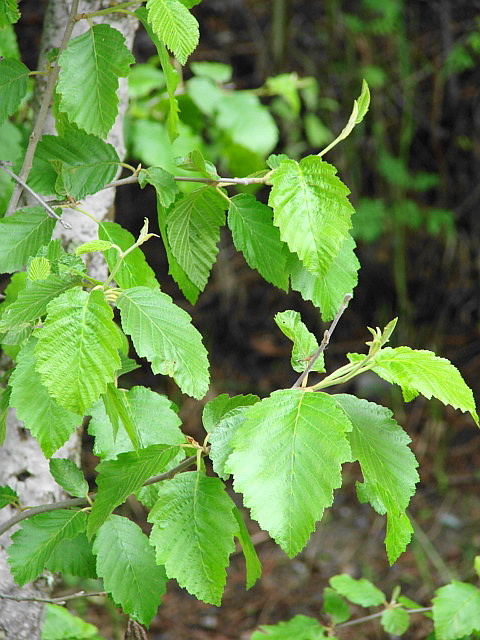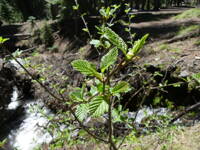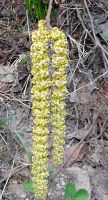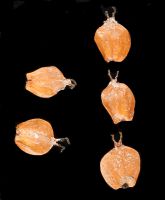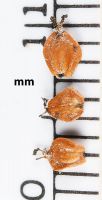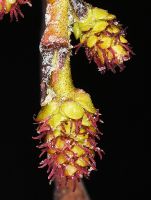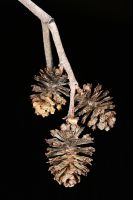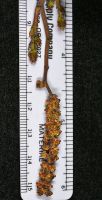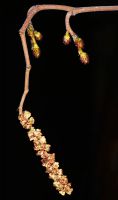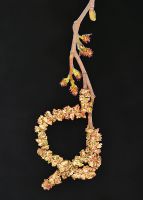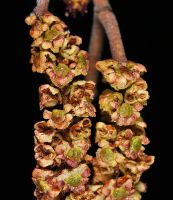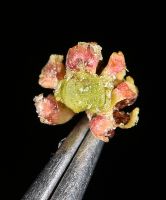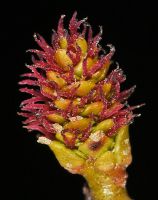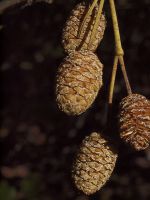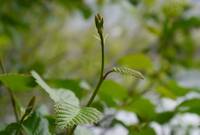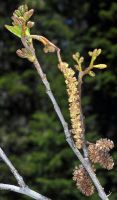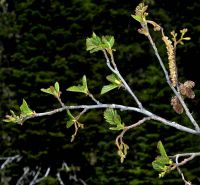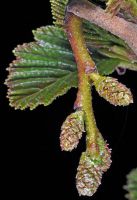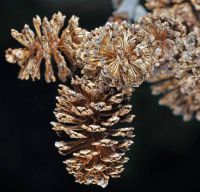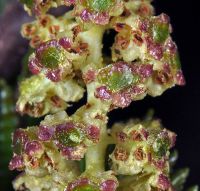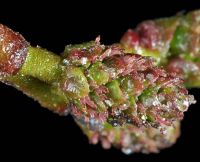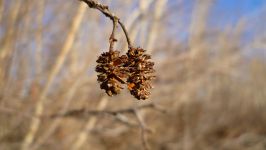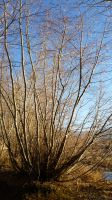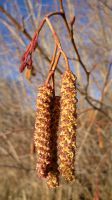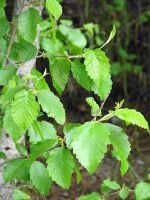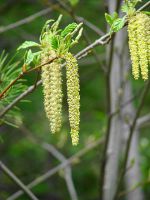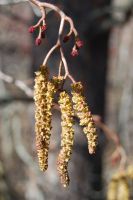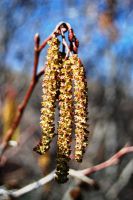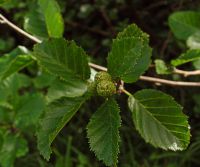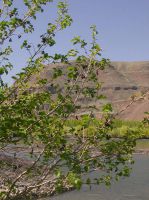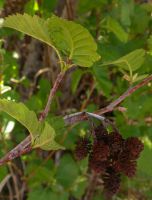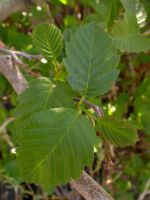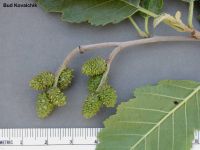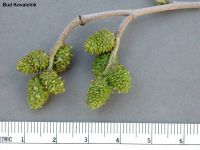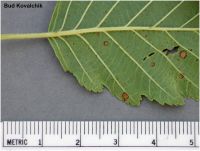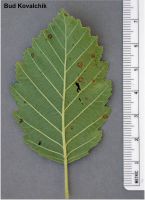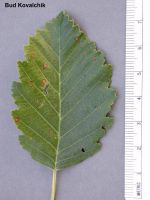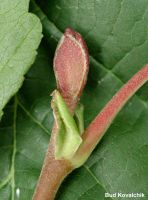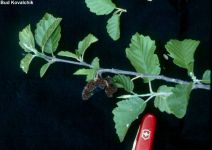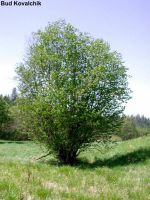Distribution: Occurring chiefly east of the Cascades crest in Washington; Alaska to California, east to the Rocky Mountains, northern Great Plains, and eastern North America,
Habitat: Moist places, streamsides, and avalanche chutes from low to middle elevations.
Flowers: March-May
Origin: Native
Growth Duration: Perennial
Conservation Status: Not of concern
Pollination: Wind
Monoecious, deciduous shrubs 2 to 10 m. tall, the bark grayish-brown to reddish, the new growth usually downy-puberulent.
: Leaves alternate, simple, the blades broadly elliptic to ovate-oblong, 3-7 cm. long, rounded at the base and usually obtuse at the tip, the margins wavy and denticulate, the upper surface green, often glabrous, the lower surface pale, usually pubescent.
Catkins developing before the leaves on growth of the previous season; staminate catkins clustered, pendulous, 3-10 cm. long, the flowers consisting of 4 subsessile anthers; pistillate catkins cone-like, ellipsoid-ovoid, 9-13 mm. long, the peduncles stout, short.
Nutlet thin-margined but without a true wing.
Publication: Methodus. 424. 1794.
-
ssp. tenuifolia – mountain alder
 Occurring chiefly east of the Cascades crest in Washington; Alaska to California, east to the Rocky Mountains.
Occurring chiefly east of the Cascades crest in Washington; Alaska to California, east to the Rocky Mountains.
PNW Herbaria: Specimen records of Alnus incana in the Consortium of Pacific Northwest Herbaria database.
WA Flora Checklist: Alnus incana checklist entry.
OregonFlora: Alnus incana information.
E-Flora BC: Alnus incana atlas page.
CalPhotos: Alnus incana photos.
USDA Plants: Alnus incana information.



